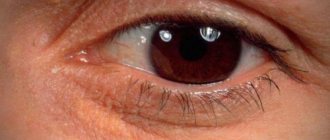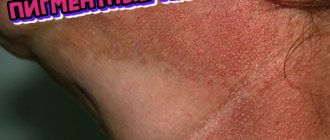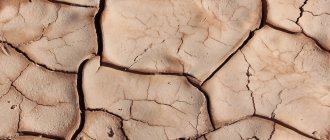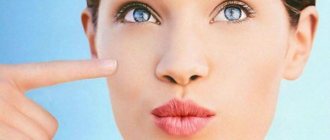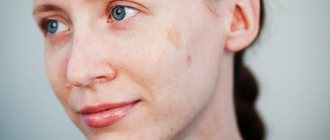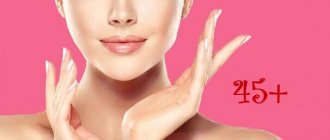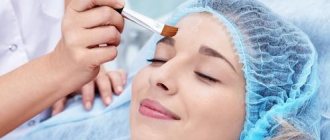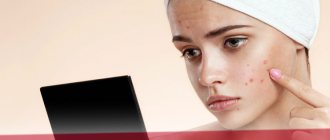A variety of spots may appear on the body, and they will indicate any disturbances in the functioning of the body. The reasons differ depending on the color:
- Brown. Usually associated with exposure to sunlight. They are not dangerous; peeling and specific bleaching agents are used to get rid of them. May be age-related pigmentation (removed using lightening creams, masks and lotions). If the spots are too dark in color, almost black, then you can suspect oncology, diabetes mellitus or polycystic ovary syndrome.
- Light pink, round. They are often a sign of developing atopic dermatitis (an allergic reaction of the body). They also appear against the background of severe psycho-emotional stress. If light spots appear on the sides, thighs or back, then pityriasis rosea can be suspected (due to reduced immunity). It also happens with ringworm, but it appears on the scalp.
- Flaky . They may be white, pink and indicate that there has been recent contact in this area with chemicals, metal, animal hair, or prolonged use of medications. But often peeling of the surface of spots can be a sign of diabetes mellitus or other diseases of the endocrine system, fungal infection, pathologies of the gastrointestinal tract, severe stress, and lack of vitamins in the body.
- With a rim - progression of fungal diseases of erythrasma and epidermophytosis (localized in the axillary or groin area, on the chest, near the navel); the development of an infectious disease microsporia (located on the scalp, abdomen and arms/legs), herpetic infection, tick-borne borreliosis, lichen planus (the color of the rim is from whitish to bright red, crimson).
Microsporia
- Dry. Most often they appear against the background of a lack of vitamins in the body, prolonged exposure to the sun, as an allergic reaction to the wind, or low air temperatures. But it’s worth checking yourself for gastrointestinal diseases.
- White . Snow-white and without clear boundaries is vitiligo and can appear at any age. The skin is not changed to the touch: there is no local increase in temperature, crusts or rashes. If the spots have a rough surface (flaking), then most likely it is pityriasis versicolor. The disease is characterized by mild itching, which intensifies with active sweating. It is noteworthy that on dark skin, pityriasis versicolor appears as white spots, but on light skin they have a slight yellowish tint.
- After sunbathing . The spots can be light, red or dark, and the reasons for their appearance are the powerful effect of high temperatures on the dermis and a lack or excess of melanin in the skin cells. They may also appear when visiting a solarium, but only if the procedure is carried out incorrectly.
Any problems with the skin are treated by a dermatologist. A specialist can make a diagnosis already at the patient’s first appointment, but it will be preliminary. Diagnostics includes: dermatoscopy, laboratory examination of fragments of the epidermis from the spot, blood testing, bacteriological and to identify pathogenic microorganisms.
Dermatoscopy
Treatment should be carried out only after consultation with a specialist. The prescription sheet may contain antihistamines (antiallergic), antibacterial, anti-inflammatory, antimycotic (antifungal) drugs and vitamins. The most effective drugs include: Ketoconazole, Claritin, Metronidazole.
In some cases, the use of special creams and peelings will help.
Read more in our article about the causes of light spots and methods of dealing with them.
Causes of white spots on the skin
Provoking factors are conventionally divided into:
- internal;
- external.
Each group has separate symptoms and etiology of development. The most dangerous disorders are those that have internal prerequisites for development.
External reasons
External root causes are less dangerous.
White pigment spots on the body are the result of:
- injuries received;
- increased sensitivity to external stimuli;
- constant interaction with chemicals;
- prolonged exposure to direct sunlight.
Probable causes also include abuse of solariums. Most often, damage to the integrity of the skin leads to disruption. The treatment approach directly depends on the cause of the disorder. Only a doctor can find out why the skin color has changed after a comprehensive diagnosis.
Depigmented areas occur in people when using aggressive household chemicals. People with hypersensitivity to chemicals are more likely to have a reaction.
Important! When influenced by external factors, the problem is not dangerous. This is a cosmetic defect.
To get rid of the problem, you need to minimize contact with the irritant.
Internal reasons
If white spots appear on the body due to internal reasons, treatment is required. It is necessary to eliminate the underlying disease.
Internal root causes include:
- autoimmune diseases;
- kidney diseases;
- gastrointestinal pathologies;
- hormonal imbalances;
- fungal diseases;
- avitaminosis.
White areas on the body are a symptom of the underlying disease. The internal factor acts as a trigger mechanism for the disorder.
Vitiligo
The disease vitiligo often leads to depigmentation of the skin. Why this disease appears and what causes it is not completely known. However, most experts are of the opinion that vitiligo is a dangerous autoimmune disease in which the immune system begins to independently destroy healthy cells that produce melanin (the hormone responsible for pigmentation). As a result, the skin is covered with milky white spots, and there are no unpleasant effects, itching or other troubles. Among the main risk factors:
- Genetic predisposition.
- Autoimmune and hormonal imbalances.
No one is immune from the sudden appearance of white spots due to such a disease. Most often they are localized in open areas of the body, in the armpits and groin. They can be found on the skin near scars, scars or moles.
There are still no effective remedies and drugs to combat vitiligo, although experts have developed a number of medications that reduce the progression of symptoms of the disease.
Diseases Causing White Spots
Before figuring out how to treat a defect, you need to determine the cause. Typically, skin formation is one of the symptoms of ongoing diseases. Each of the ailments has a separate set of symptomatic manifestations. It is almost impossible to independently determine the true cause of the disease.
Pityriasis versicolor
Pityriasis versicolor is the most commonly diagnosed diagnosis. Another name is lichen versicolor. A white spot on the back is the main sign. The number of rashes increases. The formations spread to other parts of the body.
New growths are white and scaly. The shape is round, oval or cylindrical. The boundaries of the formations are clear. Additionally, the person has itching. There is an enlargement of the lymph nodes.
The cause of the disease is a fungal infection. The disorder is contagious.
Pityriasis rosea
Pityriasis rosea is not contagious. This is the result of viral diseases. White and pink formations appear on the body. There are small light dots around them. The causative agent of the disease is a fungal infection. The treatment is complex.
Vitiligo
White spots on the skin of the legs and arms – vitiligo . Have clear boundaries. Vitiligo occurs as a result of autoimmune disorders. Symptoms appear between 10 and 30 years of age. The disorder is hereditary.
Important! The disease cannot be cured. Therapy is aimed at reducing the severity of symptoms.
Vitiligo is a serious cosmetic problem.
Idiopathic guttate hypomelanosis
White spots on the skin of the arms and torso are the result of delayed melanin formation. The disorder is hereditary. It is laid down at the genetic level. Activation of the disease occurs after exposure to ultraviolet radiation. Treatment is difficult. There is no single scheme. Therapy is aimed at combating skin manifestations.
Pigmentless nevus
This is a benign skin formation. May be congenital or acquired. There is no need to figure out how to treat the formation. These are ordinary moles with a deficiency of pigment.
All moles can degenerate into malignant formations. It is necessary to monitor their condition. The development of cancer is indicated by the growth of a mole.
Fungal diseases
A white spot on the face may be a fungal infection. The affected areas rise above the epidermis. The surface begins to actively peel off. Lumpy areas appear. There is a risk of ulcers.
On the feet, the disease thins the skin. When it appears on the head, the hair becomes dull and lifeless. The most common fungal diseases are briefly described in the table.
| Disease | Description |
| Rubromycosis | Red and white spots appear on the body. Additionally, follicles and nodules appear. |
| Microsporia | The inflamed area is covered with scales. There is pronounced peeling. The lesions merge. |
| Trichophytosis | Affects exposed skin. The disease is transmitted through household objects. There is peeling on the skin. |
Fungal diseases also include seborrheic dermatitis , candidiasis and nail fungus. Almost all disorders are contagious. Requires urgent treatment. All personal hygiene products will need to be sanitized to prevent the spread of the disease.
Leprosy
Leprosy is a chronic infection. Affects skin and internal organs. White spots on the skin of the hands and body are different in size. The outlines are clear. Infection can occur through airborne droplets. There is also a risk of intrauterine infection.
Lumps and plaques may occur. The spots merge. Treatment requires consultation with highly specialized specialists.
Syphilis
Syphilis body , including the skin. White spots on the skin of the legs and torso lead to enlarged lymph nodes. The main method of transmission of the disease is sexual.
The patient's body temperature rises. There is weakness and malaise. Without treatment, the disease progresses. The rash is characteristic of secondary syphilis.
Leucoderma
Leioderma is the result of the complete disappearance of pigment from skin cells.
The disease is a complication of other disorders:
- syphilis;
- pityriasis rosea;
- chronic dermatosis.
Melanin ceases to be produced completely. Leukoderma may have a false form. This is the result of the use of local cosmetics and medicines.
Hypomelanosis
A white patch on the face may indicate hypomelanosis .
The disease has several forms:
- guttate hypomelanosis;
- ito;
- idiopathic hypomelanosis.
All species have hereditary development factors. The disease may be accompanied by heart disease, disorders of the genitourinary system and disorders of the nervous system.
We invite you to look at photos of spots caused by the disease:
Seborrheic warts
Brown or black raised lesions that appear on any part of the skin. They are quite easy to recognize: their surface is loose, and the base is relatively small - it looks as if the wart is stuck to the skin.
In the early stages of development, a wart can be confused with a mole, but over time it noticeably changes its color and size.
The number of warts also increases with age. From a medical point of view, they are absolutely harmless, but for aesthetic reasons they can be removed.
Conditions not associated with pathology
White spots on the skin of the hands and body are not always pathological. Their appearance can be influenced by physiological factors, the environment and the cosmetics used. Such formations often do not require any treatment. They are a cosmetic defect.
Sun spots
White spots on the body after sunbathing often appear. Depigmented areas are the result of prolonged or frequent exposure to the sun. White spots on the skin after sunbathing require urgent medical attention. Some of the reasons for the formation of formations pose a serious danger.
Sometimes white spots on the skin after sunbathing can indicate pregnancy. The surest way is to donate blood to check the hCG level.
White spots on the skin after sunbathing can be the result of:
- fungal infections;
- burns from ultraviolet rays;
- high blood pressure;
- taking certain medications;
- visits to cosmetic procedures.
White spots on the skin after sunbathing require complete avoidance of sunbathing. Otherwise, the condition will worsen. The number of neoplasms will increase. White spots on the body after sunbathing can occupy large areas and even merge. The formations do not tan for a long time.
Stains from using hydrogen peroxide
Hydrogen peroxide is famous for its whitening properties. After using it, white patches appear on the skin. The boundaries are usually blurred. The formations are weakly expressed.
No treatment required. Spots on the body, as a result of using peroxide, disappear on their own. The time it takes for an area to become pigmented depends on its extent.
Spots due to pregnancy
White spots on the neck are often diagnosed in pregnant women. When carrying a child, women's bodies undergo restructuring. Protective functions are reduced. The skin is one of the first to react to any changes that occur.
The appearance of neoplasms is caused by hormonal changes.
Important! The resulting depigmented areas disappear immediately after childbirth. Additional therapeutic measures are not required.
Spots in children of the first year of life
A white spot on a child's skin may be the result of a hereditary disease. You also need to take into account that up to a year, depigmentation can be physiological. As you grow, the amount of melanin will be restored.
The appearance of extensive spots in children is caused by:
- hypomelanosis;
- vitiligo;
- pityriasis versicolor or alba .
Lichen alba Hypomelanosis in children Vitiligo in a child
The diagnosis can only be made by a dermatologist. Self-treatment is unacceptable. Any skin changes on a child’s body require consultation with a dermatologist, who will tell you what the disorder is called and how to treat the pathology.
Nutritional deficiencies and disorders
White spots on the skin of the hands are often the result of poor nutrition. You need to remove all spicy foods from your diet. These are the main provocateurs of violations.
The appearance of depigmented areas also results from:
- fast food;
- semi-finished products;
- spices;
- products with an abundance of harmful additives;
- alcohol;
- sauces;
- smoked meats and sausages.
Nutrition should be balanced and healthy.
Useful video
For information on modern methods of diagnosing and treating skin diseases, watch this video:
Similar articles
- Anti-pigmentation cream, anti-freckle, whitening...
Dark skin on the face is a problem that anti-pigmentation cream can solve. It comes in whitening, day and night options. There are also several effective Chinese creams. Read more - The skin on the face is peeling: why does this happen...
There are quite a few reasons why the skin on the face of women, men, and children peels. Starting from allergies and ending with hereditary factors. The skin also tends to be dry, red, blotchy, and dry around the mouth. What to do? Read more
- Wound after laser wart removal: consequences...
A small wound after laser removal of a wart will be normal. How to treat a wound after a plantar or finger wart? How long does healing take, what consequences can there be? How to treat the consequences: swelling, pus, burn, if the wound is oozing, there is blood. Why doesn't the wound heal? Wound treatment after wart removal. Read more
- Types of acne on the face: allergies, rashes, in the form of...
In dermatology, there are certain types of acne on the face. They can be allergies, rashes in the form of bumps or subcutaneous ones, inflammation and red spots, dermatitis, irritation. To begin treatment, the causes of their occurrence should be established. Read more
Diagnostics
First of all, the doctor conducts an external examination. This helps to establish a preliminary diagnosis. Afterwards the patient is referred for dermatoscopy. This is a tool that increases the examination area several times. Sometimes this is not enough to tell what these white spots are on the body.
A scraping is taken for diagnosis. This is necessary for a detailed study of damaged skin. Additionally, you need to donate blood. Diagnosis from photos is not possible.
If necessary, the patient is referred to see specialized specialists. This is usually necessary when traditional treatment has not given a positive result.
Pityriasis rosea
The disease is not transmitted by airborne droplets or any other route, and unpleasant round spots appear due to exposure to viral diseases with reduced immunity. Experts believe that the problem is caused by the herpes virus, and at the initial stage of development a maternal plaque is formed, from which screenings soon emerge, presented in the form of pink spots with clear boundaries.
The spots are not capable of causing pain, so their localization falls on the site of natural folds. After the folds disappear, defects remain on the body. For pityriasis rosea, treatment methods are not as serious as in the previous case. And if you approach the therapeutic course correctly, then all symptoms will disappear within 6-8 weeks. The therapeutic regimen may include the following:
- Glucocorticosteroid ointments.
- Chatterboxes.
- Antibiotics.
- Antihistamines.
- Vitamin complexes.
- Calcium-based preparations.
Treatment
The treatment is complex. Selected by a doctor. Therapy is selected individually. It is necessary to take into account the diagnosis and the degree of neglect of the pathology.
If treatment is ineffective, the selected therapy should be reconsidered.
Use of drugs
Drug treatment is most effective. Medicines are selected taking into account the cause that caused the disorder. Additionally, you need to take vitamin supplements to generally maintain your general condition.
When are antibiotics needed?
Antibiotics are necessary for infectious diseases. The course of treatment lasts 7 days. The doctor selects the appropriate medications.
The most effective include Ciprofloxacin .
Who is prescribed antifungal drugs?
The drugs are aimed at fighting the fungus. Requires taking 1 tablet per day or applying ointment 2-3 times a day. Lamisil is considered an effective drug .
Before using the tablet form, you must consult a doctor.
Preparations for lichen
To combat lichen the following is prescribed:
- salicylic acid;
- ointments based on birch tar;
- antihistamines.
The drugs are used in combination.
Birch tar Fenistil Salicylic ointment
Purposes of using glucocorticosteroids
Such drugs are aimed at eliminating the inflammatory process. Mandatory prescription for hypomelanosis. Among the most effective drugs in this group is Prednisolone .
White spots on the neck and body can be eliminated with glucocorticosteroids only through a course of treatment. Duration of therapy is 2 weeks.
Other drugs
Additionally, patients are prescribed immunomodulators, for example, Isoprinosine . The medicine is taken daily, 1 tablet. The course of treatment is selected individually.
Be sure to use vitamin supplements. This is necessary to strengthen the immune system.
Physiotherapy
The patient is referred for physical therapy.
Effective procedures include:
- ultraviolet therapy;
- PUVA therapy;
- heliotherapy;
- copper electrophoresis.
Physiotherapy is recommended when neoplasms of a benign or malignant nature are detected in the patient’s body. Without it, it will not be possible to get rid of tumors. Some of the listed methods of physical treatment are not prescribed to patients under the age of 18 years.
UV and PUVA therapy
PUVA therapy is also called photochemotherapy. The method involves alternating exposure to medications and ultraviolet rays. For skin problems, a systematic approach is effective.
Patients are prescribed surfactant baths. The patient is required to take a bath with a psoralen solution. After this, UV irradiation is used.
UV or ultraviolet therapy lasts up to 6 months. First, you need to attend the procedure every other day. Over time, the frequency decreases.
Traditional therapy
The consumption of St. John's wort, duckweed and parsnip activates the production of melatonin. These plants can also be used to treat affected areas.
A complex natural medicine is used to treat the skin. To prepare, mix equal amounts of chamomile, plantain and sage. The dry mixture is poured with boiling water and left for 30 minutes. Wipe the white areas with the resulting liquid 3 times a day.
The stain can also be wiped with melon juice.
Skin graft
Skin grafting is a surgical procedure. The patient is referred for autodermoplasty. For the operation, a skin flap is taken.
Dermoplasty is suitable for the face. If the affected area is large, your own skin may not be enough.
Epidermis transplantation is resorted to as a last resort. This is possible when traditional methods have proven ineffective.
Nutrition correction
You definitely need to reconsider your diet. Poor nutrition is one of the common causes of skin formations. Nutrition correction is part of complex treatment.
You will have to give up:
- strong coffee;
- cocoa;
- smoked and sausage products;
- spicy dishes;
- alcohol;
- confectionery products;
- canned food;
- blueberries;
- chocolate;
- pepper
The diet should be balanced. It is better if the portions are small but frequent. Additionally, you need to drink 1.5-2 liters of water per day.
You need to give preference to lean meats. The diet must include porridge. Fruits and vegetables are healthy. Once a day you need to drink fermented milk products.
Complications and consequences
The consequences for advanced forms of rashes are serious. When they are caused by an allergy, its untimely treatment leads to Quincke's edema.
This is extensive tissue swelling that makes breathing difficult. The rash will spread, the itching will not give rest, and pustules will appear as a result of scratching.
If psoriasis is not treated in a timely manner, complications arise:
- The kidneys and liver will stop working normally;
- The metabolism in the body will undergo changes;
- Provoking the development of heart diseases;
- Disorders in the nervous system.
If treatment is not started in time, the spots will completely cover the entire body. The skin will not be able to perform its main function - breathing. The normal functioning of the sweat glands will be disrupted.
The body will not be able to regulate temperature, this will lead to inflammation, and then blood poisoning. Changes in metabolic processes are possible. Negatively affects the cardiovascular system.
If treatment is not started immediately, there is a risk of the following diseases:
- Liver and kidney failure;
- Stroke;
- Oncological diseases;
Prevention
Skin can be preserved without defects by following preventive measures.
Doctors recommend:
- tanning in doses;
- use sunscreen when tanning;
- refuse to visit the solarium;
- Healthy food;
- to refuse from bad habits;
- maintain personal hygiene;
- drink enough clean water.
It is important to monitor your body and consult a doctor promptly if unwanted symptoms appear. Prevention significantly reduces the likelihood of developing depigmented areas.
Is it possible to squeeze out such pimples?
Dermatologists do not recommend getting rid of pimples and spots by squeezing them yourself.
Through a wound formed on the skin, harmful microorganisms from the external environment enter the bloodstream. The use of an antiseptic does not guarantee protection against them.
When squeezed out, the pus inside the white dot does not completely come out. Part of the subcutaneous contents enters the blood, pathogenic bacteria spread throughout the body, affecting healthy tissues and organs. This aggravates the disease and can cause blood poisoning.

